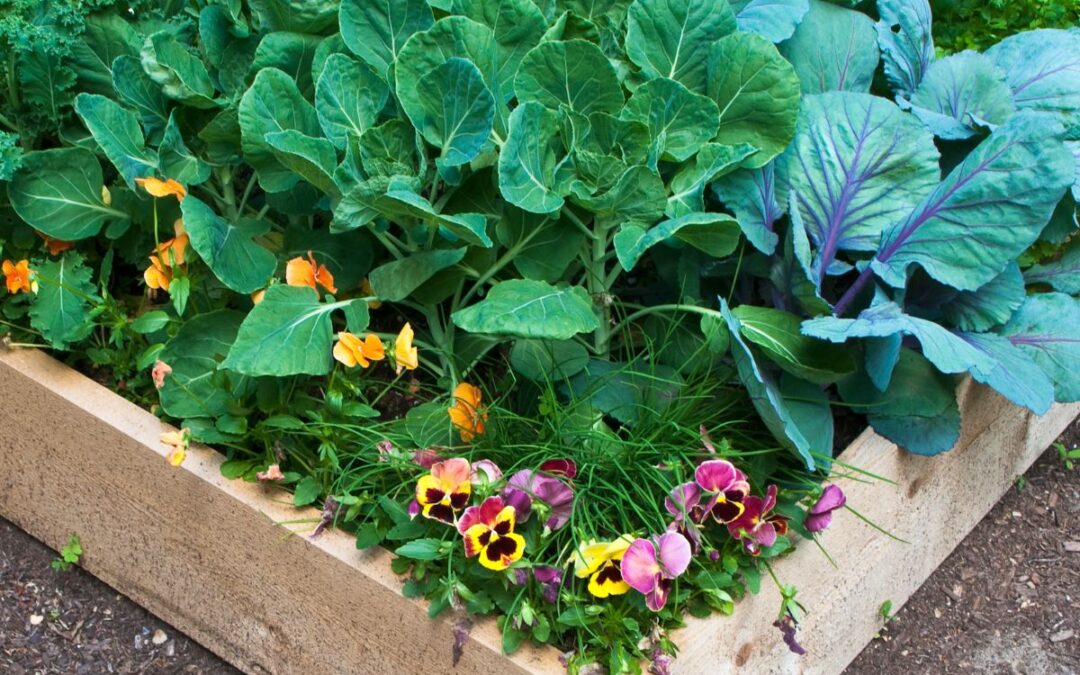Raised garden beds are a popular option for growers, and it’s no wonder: they are versatile, require less weeding than in-ground gardens, make it easy to maintain water levels, and they can fit in virtually any space – with or without a yard. If you haven’t tried one yet, you might just find it’s your new favorite way to garden! In this article, we’re diving into a list of tips for those who are new to raised-bed gardening.
Also called planter boxes and elevated gardens, raised beds are perfect for areas like apartments or condos. Put them on patios, balconies, and even rooftops. If you have a yard, you can add a raised garden bed anywhere, including next to existing in-ground garden beds. (Note that, while a raised bed doesn’t need to be perfectly level, you may need to make some adjustments if your yard is sloped for proper water drainage and to prevent soil erosion.)
The height of raised beds adds to their versatility and improves ergonomics. You can place them on the ground, and, even at a typical height of 10”, they require less kneeling when you’re planting or watering. You can even use supports under your planters to raise them a few feet off the ground, and save some of the backache that usually comes with gardening! Raised garden beds are also excellent options for growers who require wheelchairs, as long as they are at least 24” high.
Here are a few other reasons planter boxes are popular:
- Areas with poor soil or drainage that don’t lend themselves to in-ground planting are perfect spots to build a planter box. Raised beds drain more quickly than in-ground beds, helping avoid things like waterlogging and root rot.
- You can extend your growing season with an elevated garden. Because raised beds are above ground, the soil in them warms more quickly in the spring, enabling you to plant earlier.
- With more vertical space, plants’ roots can dig deeper for healthier root structure and nourishment.
- Planter boxes can make an aesthetic statement in your landscape. Positioning several together, at varying heights, can even create a focal point in your yard.
If you’re new to gardening or considering working with raised beds for the first time, read on to learn about how to choose the best type of planter box, pick your plants, prepare your garden, and protect your elevated bed from typical garden pests.
Which Planter Box Is Best for a Raised Garden Beds?
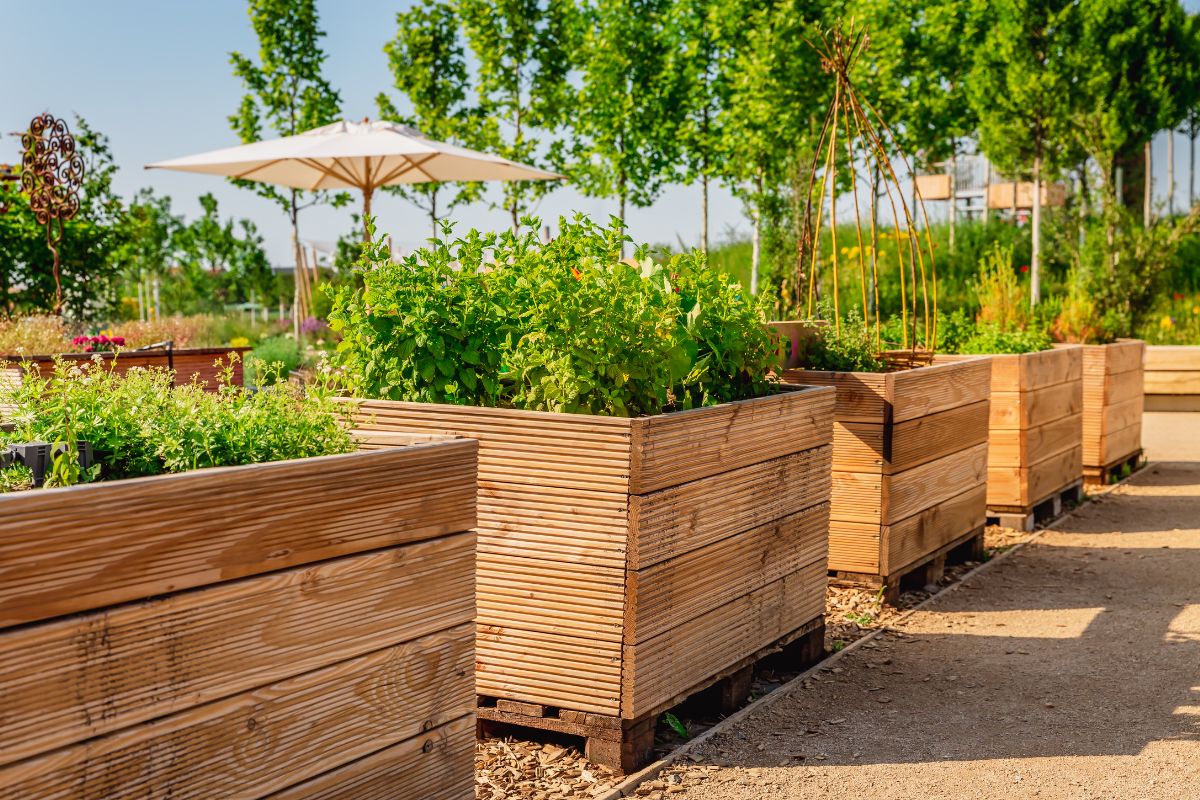
You’ve got a lot of decisions to make regarding your first raised garden bed: what type of planter box do you want? Where should you place it? Are you growing vegetables, flowers, or both? While the choices may seem overwhelming, take it one choice at a time.
1. The first question is, what are you planning to grow? Maybe you want to plant a few herbs for adding flavor to your recipes, grow your favorite veggies for meals, or sow your favorite blooms for fresh-cut flower bouquets all season long. Whatever your choice, consider whether one bed will be enough or if you’ll need multiple boxes to accomplish your garden goals.
2. Next, where do you want to place your garden bed? To determine the answer, consider these factors:
- Light requirements. Place your raised bed in the location that best suits your garden plan. Depending on what you’re growing, you may need full sun or partial shade.
- Water source. Ideally, you can locate your planter box near a hose or a rain barrel for easy watering.
- Kitchen proximity. While it’s not necessary, if you’re growing herbs or produce, you might consider building your raised bed where it’s easily accessed from your kitchen while you’re preparing food.
3. Now it’s time to purchase or construct your raised garden bed, which can be made from wood, metal, concrete, bricks, and more. (Learn more about how to build raised garden beds here.)
Selecting The Right Plants for Strong Growth
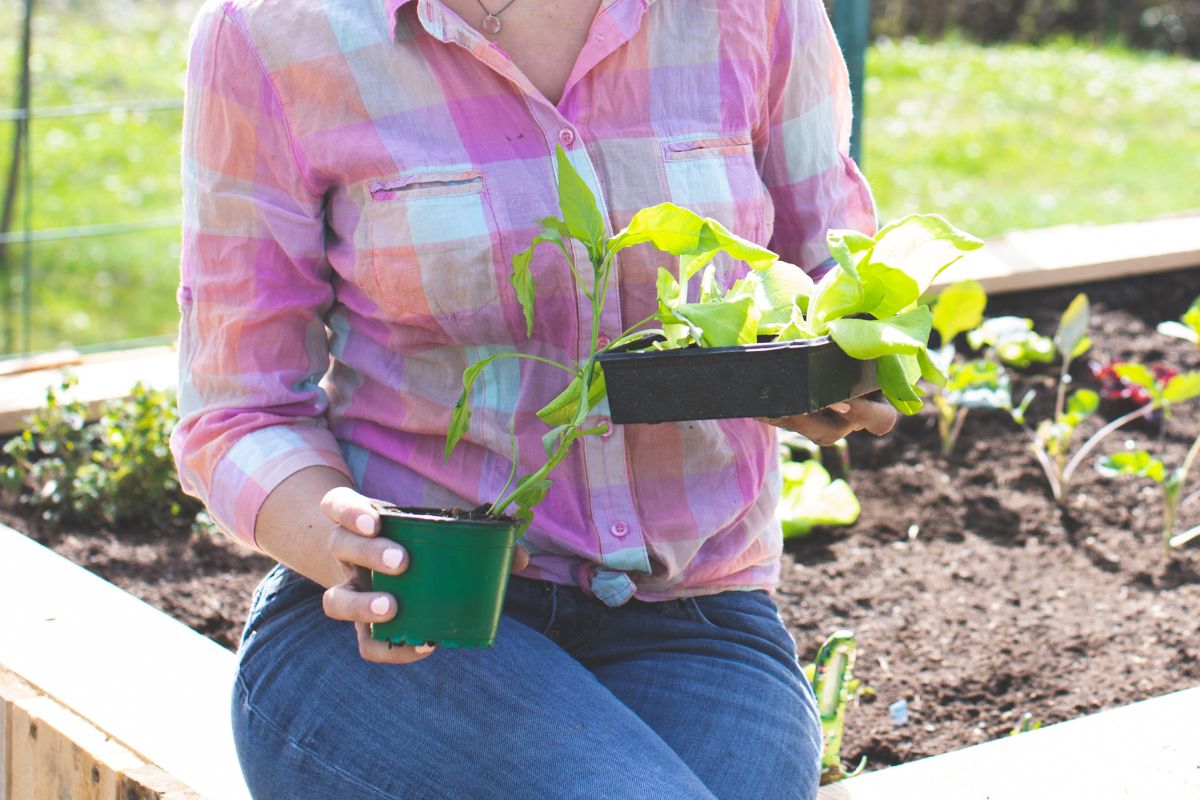
Every plant has different needs, and because you’ll likely grow different varieties close together in your planter box, make your selections based on plants with similar needs and size characteristics. Consider factors like:
- How much water they require;
- How much light they like; and
- How big they will be at maturity.
Your plant choice also needs to factor in your climate. In Western Washington we’re in hardiness zones 7b – 8b. If you’re reading this outside of Western Washington, find your zone to help you choose the best plants to thrive in your location.
It’s important to note that, while most plants will do quite well in a raised vegetable garden, there are a few that aren’t well suited for this smaller space. Sometimes they simply require too much room to spread or require a deeper root system than a planter box allows. Other times, they might crowd out other plants. A few examples of plants to avoid in your planter box include squash, melons, corn, blackberries, asparagus, mint, rhubarb, and horseradish.
Raised-Bed Garden Design
If you’re new to this type of gardening, beware of adding too many plants. Especially if you’re adding small transplants or growing from seed, it is tempting to squeeze more into less space. Remember, overcrowding won’t help your plants thrive.
How do you know how much can fit in your raised bed?
Square-foot gardening can help you determine the answer. First, divide your garden space into square feet. Next, look at the back of your seed packets or on the tags of the plants you purchase to see how much space each type requires. Use that information to determine how many plants you can grow within a square foot. For instance, you can grow 2 cucumber plants in a square foot, but 16 radishes fit in the same space. If you plant with this principle in mind, you’ll avoid overplanting.
Protect Your Raised Garden Bed from Pests
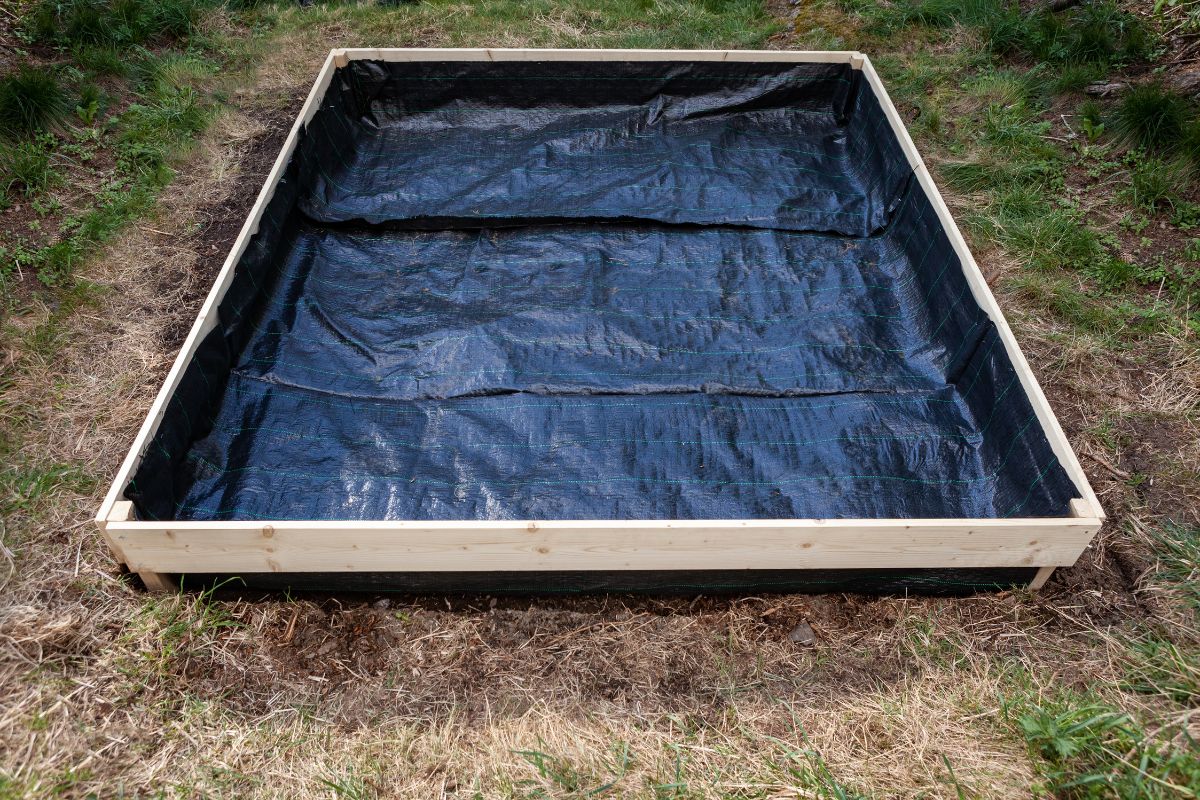
You may have heard that starting a garden bed with a layer of newspaper or cardboard on the bottom will help repress weeds, but doing so can attract pests and rodents (and weeds are easily managed in raised beds).
There are a couple of things to prevent pests from damaging your garden. If your raised bed will be directly on the ground, consider stapling a wire barrier like hardware cloth to the bottom to keep voles, gophers, and other underground pests from targeting your plants’ roots.
Next, add landscaping fabric, a type of porous ground cloth, to the bottom of your bed. This aids drainage and ensures that only water, not soil, runs through any crevices in the bottom of the planter box. (The fabric will also help block weeds, even though one of the benefits of planting boxes is that by starting with weed-free soil, like GardenBlenz Soil, these garden pests will already be less of an issue.)
Now, you’re ready to add soil. To determine how many cubic feet of soil you need, use this formula:
Multiply the raised bed’s length x width x height, which will give you the cubic feet of soil you’ll need to fill your planter box or use our Materials Calculator.
The Dirt About Soil – Why Good Soil Matters
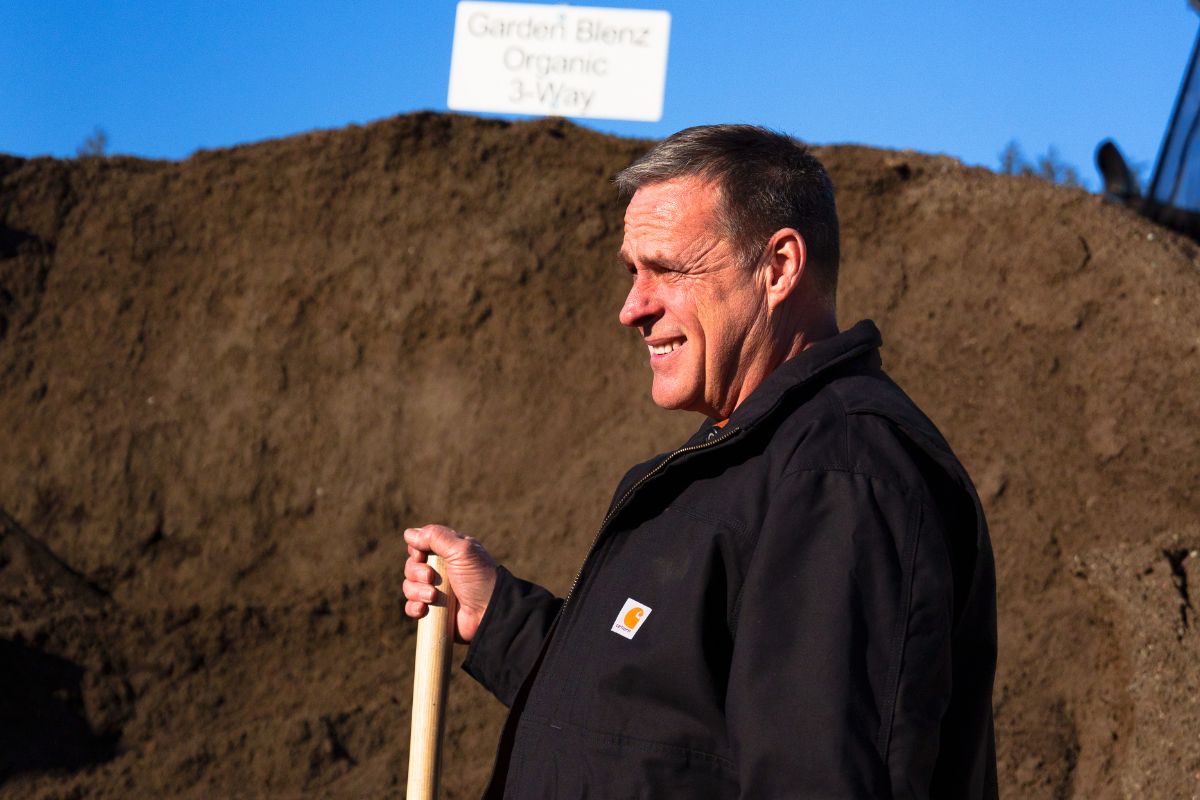
Soil is a living ecosystem with organic matter meant to give plants life, which is why healthy soil is the linchpin to a thriving garden. Plants depend on it for oxygen, water, and the right fertilizer to promote healthy development.
Unfortunately, native soil can tend to be too dense or compacted, which drains water slowly, leading to waterlogged roots and root rot. Thick, heavy clay-based soil makes it challenging for plants to grow, plus native soil may be contaminated by chemicals and pesticides or depleted of nutrients. In short, bring in healthy, weed-free soil to give your plants a good foundation.
We recommend GardenBlenz Soil – Organic, a high-quality loamy soil that is specially formulated with premium GreenBlenz Compost and top mix sand, and gives your raised bed the healthiest foundation for your garden. Plus it is OMRI listed for organic use so if you’re growing organic, GardenBlenz Soil Organic is the best soil for your garden. The balance of sand and compost in this premium soil provides for optimal drainage and moisture retention. High levels of organic matter that is rich in nitrogen, phosphorus, potassium, and magnesium support root growth and promote healthy plant development.
How to Plant Vegetable Starts in a Raised Garden Bed

Planting vegetable starts in your raised garden bed is the easy and fun part. Ensure your plants get the best possible start by following these steps:
- Water your garden planter thoroughly.
- Dig a hole as deep as the plant’s container and 2-3 times as wide.
- Place your plant into the hole, making sure the surface of the plant’s soil is even or slightly above the level of the surrounding soil. Don’t bury the stem below soil level, which can cause a plant to die. When in doubt, leave more, not less, of the plant exposed.
- Refill the hole with more GardenBlenz Soil – Organic and gently pat it down around the plant to remove any air pockets.
- Once your plants are in place, water the raised garden bed well to ensure the roots bind to the soil.
Check on your garden beds every few days. To maintain the proper amount of moisture, press your finger into the soil 1-2” deep and if the soil is dry, give it a good soaking. Consistency is key here. It is better to water deeply and less frequently than let the soil dry out too much and then overwater to compensate.
Caring for Your Raised Garden Bed
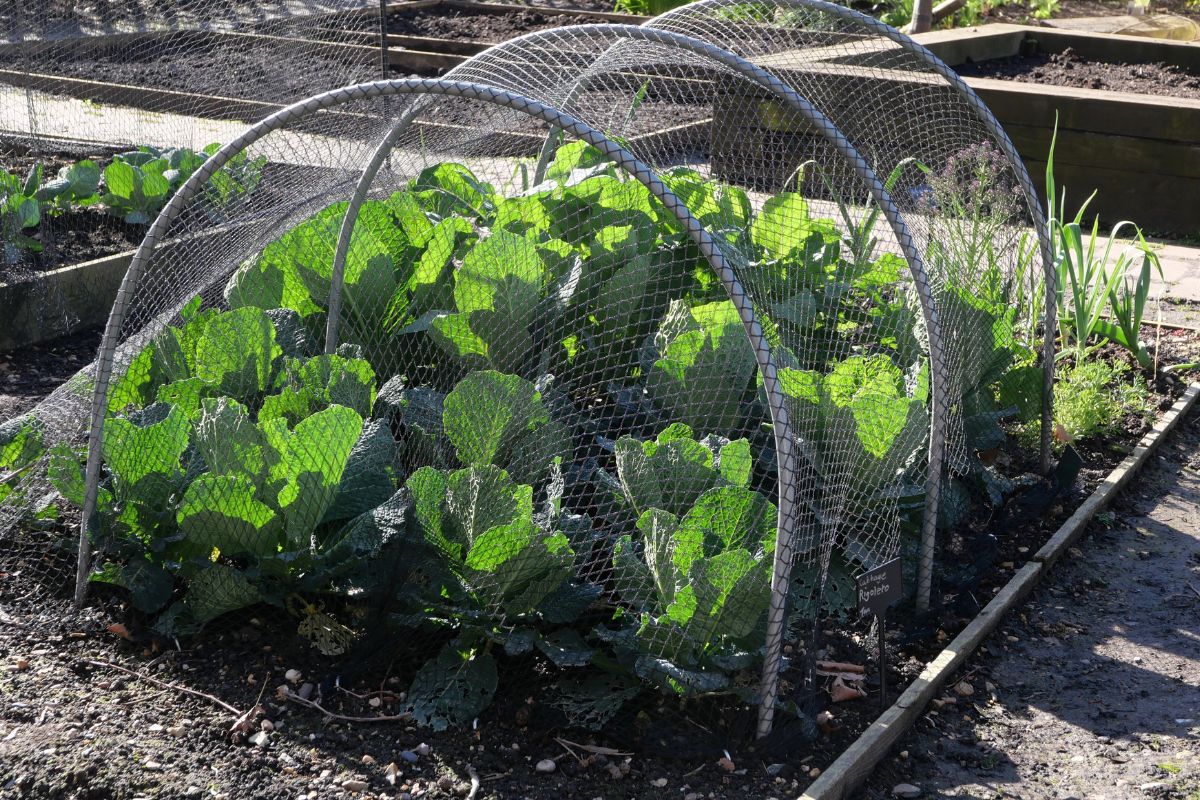
Among many other benefits, raised beds help protect your plants from pests like moles and voles, but there are still a few other ways to protect your plants from pests and predators:
- The wire barrier you placed on the bottom of the bed will keep out underground pests. Now add a barrier over your plants to keep smaller animals like rabbits and squirrels from getting to your produce before you! Garden centers carry floating row covers or mesh fabric to drape over garden hoops, which will deter moths and other flying pests from laying eggs in your garden. Secure the cloth in place with landscaping pins to keep unwanted visitors out.
- Keeping out deer may involve building a wire cage or wooden structure over top of your raised bed. A deer fence should be between 6’-8’ tall.
- If you’re planting crops, consider adding in a few flowers around the borders of your bed for added color and pest protection. Marigolds, sweet alyssum, nasturtium and dill attract pollinators and beneficial insects that manage garden pests.
Just like in-ground gardens, raised garden beds can be a source of nourishment, enjoyment, and beauty. Their size defines how much work you put into them, so if you are a beginner at this, start with 1 (or 2) smaller elevated beds and get a feel for how to work with them. If you don’t mind getting your hands dirty, there is no limit on how many you can build. And because there are fewer weeds to deal with, you’ll find more time to enjoy the outcome of your efforts!
Thanks for Reading!
If you found these gardening tips helpful, get to know us by following Lenz Enterprises on Facebook and Instagram. We regularly provide education about soil, compost, and Earth materials, gardening advice and plenty of humor too! If you’re located in western Washington and need gravel, compost, mulch, soil, or sand, give us a call 360-629-2933, we’re here to help!

